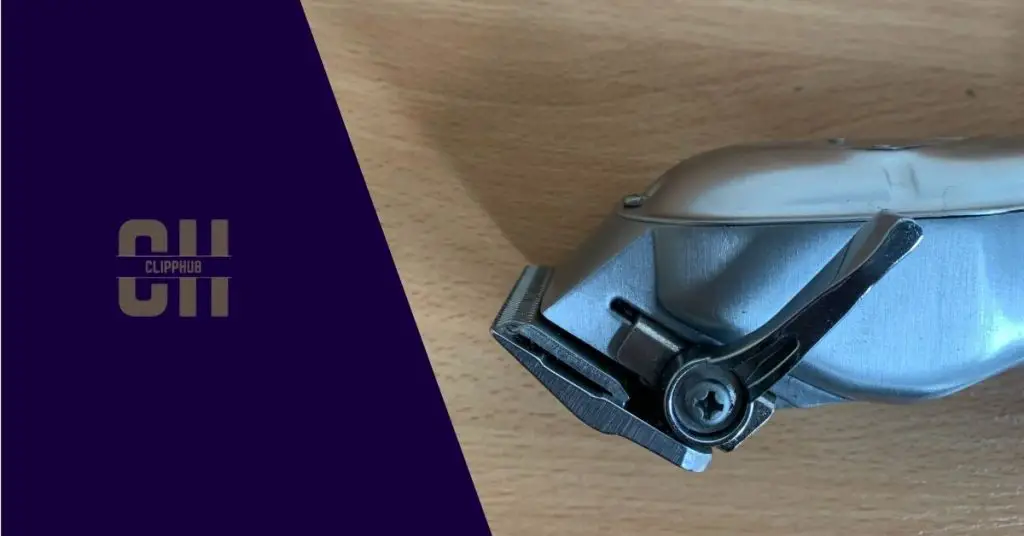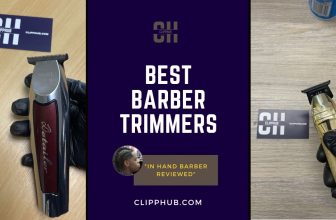
Having a hair clipper is great, as long as you have the skills, you can basically create any kind you want on demand.
But how do hair clippers themselves work?
Why don’t they cut skin? and how can you modify your clippers to perform better?
In this article, we’ll cover this topic and more.
So with that said, let’s get into it
How Do Hair Clippers Work?
Hair clippers come in different forms, you have corded and Cordless clippers.
With that, a clipper can either have a lever or be a detachable clipper.
Corded vs cordless
Now when it comes to clippers there are two routes you take and that’s corded or cordless.
Corded clippers are deemed to be more traditional and you tend to find more of this type of clipper in places such as barbershops or a salon.
On the other hand, cordless clippers are growing in popularity and seem to be a type of clipper picked up for ease of use and portability.
You can’t go wrong with whichever you choose but let’s go over the positives and negatives of each.
Cordless Hair Clippers
- Portable and convenient
- No cords to get in the way
- On average are quieter than corded clippers
- Can have multiple speed and length settings
NEGATIVES
- Can be more expensive than electric clippers
- Need to be charged frequently
- Blade replacement is needed when blades become dull
- Battery life limits the amount of use
Corded Hair Clippers Benefits
- Can be used for long periods without stopping
- No need to recharge or replace batteries
- Generally more affordable than cordless clippers
- Can have multiple speed and length settings
NEGATIVES
- The cord can get in the way during use
- More difficult to use in areas without electricity
- Blade replacement is needed when blades become dull
- Need to be plugged in, which can limit mobility
Again whichever is on you and what you want from your clipper but what’s inside your calipers is what makes it tick. We touch on what’s next.
How Clippers Work
Now we’ll go over what gets the Clippers going.
Power source
It starts at the source. Without a source of power, your clippers won’t work at all.
Going back to the cordless and corded examples we touched on earlier.
If your clippers are cordless they’ll have a battery that will eventually run out of charge over time as you use your clipper.
Sometimes does to this, your clippers may not have enough power and won’t cut.
However, this is rarely the case and most clippers are manufactured with the right power to get the work done.
On the other hand, if you have a corded clipper, you won’t have to worry about a battery, so there’s no stressing over losing power, you get sustainable power at all times.
But what’s all this power for we told on that next.
Motor
Your motor.
It’s like the heart of your clipper. There are different types of motors in each world in the same way but they are slightly different I explain each one.
Magnetic
A magnetic motor is the fastest type of motor and tends to be found in corded hair clippers.
This is because for that type of motor to function, it needs that consistent power.
The magnet in pushes against the cutting blade and spring which moves the cutting blade.

It is the go-to type of motor for most barbers and can move at 120hz per second, providing the finest cutting and performance.
A popular Wahl magnetic motor hair clipper is Wahl’s professional 5-star line. These include clippers such as the Wahl Legends and the Wahl Seniors.
Rotary
The rotary motor converts circular motions into the liner (straight) motion which is what moves the cutting blade.
The motor itself roared and that motion is then passed to your blades.
Rotary motors are the most popular type of motor in clippers as they are the cheapest.
You tend to find the type of motor in your cordless clippers but they better brand the motor reliable the motor as this motor tends to give way to the easier out of the 3 motors.
The higher-end motors had switches that you can use to power them up. This video shows an example
Pivot
Pivot motors work similarly to magnetic with the same push and pull effect but it’s just moving slower.
Pivot motors are found in both corded and cordless clippers as they offer a nice blend between speed and power.
This video explains motors in more detail.
Now all This and sped have to go somewhere, and yes somewhere are your blades but not all blades are made the same.
Blade
Your blades are where the real magic is handled and you must look after them if you want your clipper to perform.
Titanium
Titanium is a lightweight and strong metal that is highly resistant to corrosion.
Compared to stainless steel, titanium blades (the other type of metallic blade) titanium blades lighter, stronger, and more durable. They are also less prone to corrosion and rust.
But this all comes at a cost. Titanium blades are more expensive and you are not able to sharpen them well if and I mean if they become blunt or damaged.
You are unlikely to have titanium clipper blades as your default when you first brought your clippers but if your model allows it, titanium blades can be a good invest meant.
Stainless
Stainless steel, on the other hand, is a type of steel that contains chromium, allowing the metal to have rust/corrosion resistance.
Stainless steel blades come standard and most clippers and are very reliable.
They can be sharpened when they fill, they are hard to rust and when you need to replace them when damaged, they aren’t too expensive.
If you have stainless steel blades, you don’t always have to get titanium blades, these blades can hold their own.
Ceramic
Ceramic blades aren’t too common but if you have them on your clippers then they can do great work too.
Ceramic blades don’t have as much friction between the blades and they do provide a good cut, however, they are expensive and you can’t sharpen them.
Overall the blades you have will be good, it’s just what happens when they dull or start pulling hair.
If you are in this situation, I have a guide on how to sharpen your (stainless steel) clipper blades.
These are all the cutting blades (the smaller blade).

The bigger blade on your clipper is what feeds hair to be cut by the guard blade/front cutting rail blade.
This slo-mo video shows this in action.
Detachable blade clipper
Now blades are blades but how they function is what gives you the results you look for in a clipper.
Now we’re going to talk about the lever.
Within a corded or uncorded clipper, you have different types of motors but also different types of functioning blades.
If you have a lever on the side of your clippers, and you push it up, it closes your clippers, this cuts more hair

If you put the lever down, it opens your clipper blades and this will cut less hair.

Now, your clipper may not have this at all in that case you most likely have detachable blade clippers.
These types of clippers require you to change the blades individually instead of using a guard like you would with your lever-based clipper.
You can learn more about this in the clip-phub article on how guards work on clippers.
and if you would like to know how to use guards check out the guide on how to use clipper guards.
In most cases, you’ll have a lever-based clipper, this clipper is more accessible as the other type (detachable blade clippers) are more expensive.
Phew, that’s how hair clippers work.
Now, if you’re looking to use your clippers to provide a clean fade I go over them in my article on how to use guards on clippers.
CONCLUSION
In this article, we asked the question, how do hair clippers work,
Hair clippers are all different types of clippers, lever clippers, or detachable clippers.
These clippers can also be corded or cordless.
A hair clipper starts its magic from the power source that can either be corded or battery.
This powers the motor, which powers the blade and allows your clippers to run.
FAQ
How do hair clippers cut hair?
How do I clean and maintain my hair clippers?
Can hair clippers be used on any hair type?
If you found this article on how do hair clippers work helpful, check out other articles below on this topic:










